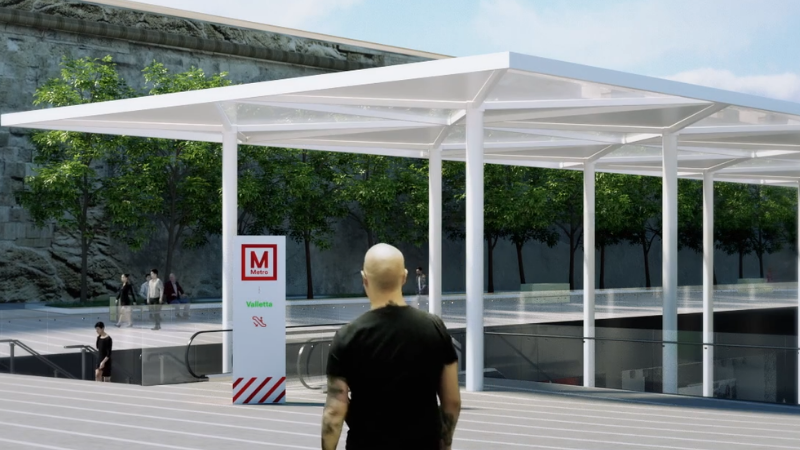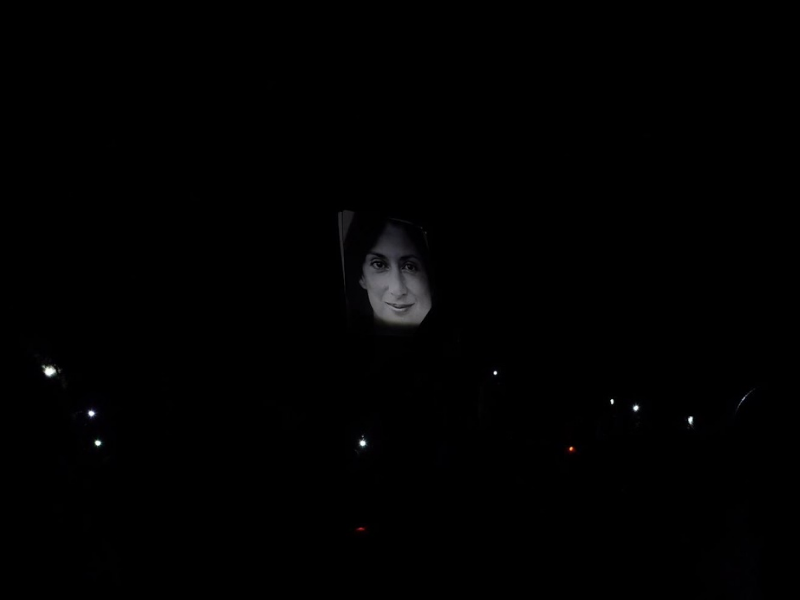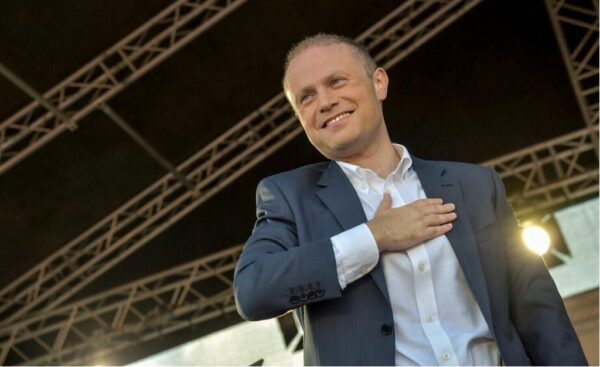A geologist has flagged the “many questionable aspects” of the government’s €6.2 billion metro project, which are largely centred around the lack of presented research about the type of rocks that would have to be tunneled through to connect the 26 metro stations envisaged by the government’s initial proposal.
“The government simply presented 26 potential locations for underground stations which are linked together. The elephant in the room is precisely that; the linking up between one station and the other,” geologist Peter Gatt said. In total, the tunnels are expected to add up to approximately 36km of underground rail lines.
“There are many questionable aspects about this. They have no idea what sort of geological problems they might face as there are no geological studies,” Gatt continued, flagging in particular the fact that Malta does not even have its own national geological service to begin with.
“In this case, we have some nice, glossy designs created by architects but that’s it. We don’t know what difficulties will be faced during the actual tunneling,” he added.
The design, proposed by a firm known as Arup, was commissioned by Transport Malta. Arup is a firm that consists largely of designers, planners, engineers, architects, consultants and technical specialists.
While Gatt made it clear he believes that the metro proposal is necessary to alleviate the country’s congested transport network, he insisted that the lack of accurate profiling of the rocks which need to be tunneled through, as well as Transport Malta’s track record with such studies convinced him “there’s nothing substantial in the promotional brochures distributed so far”.
Gatt explained that serious complications could arise from a lack of knowledge about the geological profile of the rocks. Such complications arise from the overall weakness of Maltese limestone and the densely built-up urban environment of Malta.
“Maltese limestone is a relatively weak type of rock. That is both an advantage and a disadvantage: it’s an advantage because the rock can be easily cut through. However, the obvious disadvantage is that a collapse is far more likely,” Gatt explained.
“In addition to that, there are a lot of discontinuities in our rocks, cracks which are present everywhere in Malta’s geological landscape. One of the dangers that could happen during tunneling because of this is a collapse, something we should expect,” he added, explaining that such collapses could even lead to phenomena known as ‘sinkholes’.
Sinkholes occur when underground depressions or holes are formed due to the collapse of the surface layer. In other words, tunneling “two, three storeys” deep beneath highly urbanised areas could pose the risk of a sinkhole being formed since one would be hollowing out the ground beneath them.
Gatt, stating that sinkholes are a common problem in such circumstances, flagged a recent example of this in a construction project that was recently conducted in Ottawa, Canada, with local news reports describing how “a sinkhole swallowed a major downtown thoroughfare during construction” of a $2 billion light rail line.
The promotional website set up by Transport Malta for the project also acknowledges the lack of geological data, data which Gatt insists should have come before anything else in order to determine whether the project is feasible.
He also referred to the one recent instance in which Transport Malta had to carry out similar studies in relation to the Gozo tunnel, stating that the samples that were collected, known in geological terms as ‘cores’, were way too far from each other.
“I saw the reports for the Gozo tunnel, they dug nine boreholes over 2 kilometres of cores,” Gatt said.
“What I saw clearly indicates that these cores were analysed by a Maltese architect and Italian engineers who know nothing about local geology. There were 20-metre gaps in between one borehole and the other, with the land in between not being studied at all,” he added, explaining that in such a study, every metre needs to be looked at.
The study for the Gozo tunnel was commissioned by Transport Malta and assigned to GEOTEC SPA, an Italian firm. Gatt said the work conducted by the firm does not compare to more thorough studies that he had seen carried out for the tunnel between the UK and France.
Providing samples from the data presented by the study on the Gozo tunnel to back up his claim, Gatt showed how there were gaps of information on the seabed of 10 consecutive metres and over, with some pages containing scant descriptions of the quality of the rock that was found.
“There is nothing credible in this geological report that was sponsored by Transport Malta. Are they going to do the same thing for the metro? Just pretending to run a geological study on a few boreholes? That would be a serious issue,” Gatt said.
He also warned that costs for such a project could very easily spiral should a collapse happen, stating that just one collapse during the building of a tunnel between the Delimara and Marsa power stations had ended up doubling the cost of the entire project.














The only reason why the “government” has launched a fake public consultation about a metro is because this was a promise written in the 2017 electoral manifesto. So before Carmelo Abela (the Minister without portfolio in charge of the implementation of the manifesto) appears in another press conference to tell us that “government has completed 99.99999999% of the manifesto,” the government had to appear to be doing something. I expect such press conference to follow a few days after the budget, in which the Finance Minister will announce some measures to address other unfulfilled electoral promises so that Carmelo Abela can include them as “implemented” in his 99.99999999%. He will do so on the day of the Opposition Leader’s reply to the Budget Speech.
A few days later, the PM will reply to the Opposition Leader, and give a press conference after his speech in which he will announce the election and proceed to San Anton to meet the President.
But in the 2017 election manifesto, the Labour Party-State had said that they had all the metro studies in hand. So why did they wait until the electoral campaign of 2021/2022 to carry out the promised public consultation?
The answer is available on metro mt, the propaganda website set up to impress the public that this is “real.” On that website there is a timeline of events, and it says the project started in 2016, but it also shows that all metro studies were carried out after 2017.
So if Labour lied to the public in 2017, what are the chances that Labour is lying to the public again in 2021?